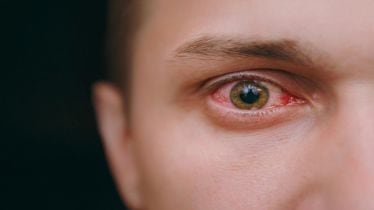Eye Flu in India: Cases of conjunctivitis, also known as eye flu are on the rise across India. According to media reports, doctors are witnessing around 100 cases everyday in Delhi. A spurt of eye flu cases has been reported in several parts of Agra too.
According to media reports, the Ophthalmology Department of the SN Medical College and the district hospital of Agra treated more than 40 per cent of patients infected with the eye flu. The doctors claim that the number of eye flu cases had increased significantly. Reportedly, most of the patients had swollen red eyes and experienced pain when they visited the doctors.
What is eye flu or conjunctivitis?
It is an inflammation of the conjunctiva of the eye. Conjunctiva is the clear, thin membrane that covers your eyeball and the inside of your eyelids. It is also called Pink Eye because it can cause the white of the eye to take on a pink or red color.
Conjunctivitis is “highly contagious” and can easily spread through contact or touch.
According to the Centers for Disease Control and Prevention (CDC), symptoms of pink eye can vary but typically include redness or swelling of the white of the eye.
What are the causes of Eye Flu?
According to CDC, the most common causes of conjunctivitis (pink eye) are:
- viruses
- bacteria
- allergens
- Other causes include
- chemicals
- contact lens wear
- foreign bodies in the eye (like a loose eyelash)
- indoor and outdoor air pollution caused, for example, by smoke, dust, fumes, or chemical vapors
- fungi
- ameba and parasites
It can be difficult to determine the exact cause of conjunctivitis because some symptoms may be the same no matter the cause, CDC revealed.
What are the symptoms of Eye Flu?
Symptoms of conjunctivitis can include:
- Pink or red color in the white of the eyes
- Swelling of the conjunctiva
- Increased tear production
- Feeling like a foreign body is in the eye or an urge to rub the eye
- Itching, irritation, and/or burning
- Discharge
- Crusting of eyelids or lashes, especially in the morning
- Contact lenses that feel uncomfortable and/or do not stay in place on the eye
How to Eye Flu is treated?
According to doctors, antibiotic eye drops, eye ointments, topical decongestants, lubricants, and some oral anti-allergic can help in the treatment of conjunctivitis. If you are infected with Eye Flu, wash hands with soap and water to decrease the spread of infection.
To help relieve some of the inflammation and dryness caused by conjunctivitis, you can use cold compresses and artificial tears, as per CDC.
“Most cases of viral conjunctivitis are mild. The infection will usually clear up in 7 to 14 days without treatment and without any long-term consequences. However, in some cases, viral conjunctivitis can take 2 to 3 weeks or more to clear up,” CDC states.
